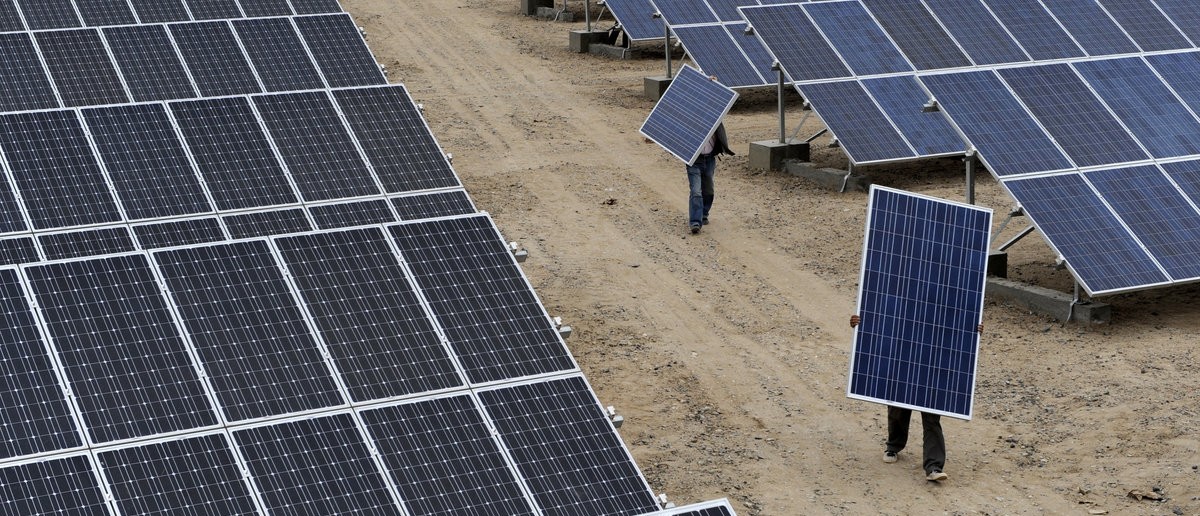Residents of the sun-drenched town of Pahrump, Nev., near the California border, are used to coping with rattlesnakes, gusty winds, and scorching temperatures, but now they are facing a different kind of challenge – one that threatens to destroy the character of their unique rural community: Big Solar.
Eager to cash in on generous federal subsidies for renewable energy and to become a part of the Biden administration’s green energy future, San Francisco-based Candela Renewables wants to build an industrial-scale solar array – known as the Rough Hat Nye County project — on 2,300 acres of federal land adjacent to Pahrump.
“It seems illogical to me to destroy the environment in order to save the environment,” Pahrump resident Jeanie Cox-King told NBC News in late November. “We should keep our public lands public.”
Located around 60 miles from Las Vegas, sunny Pahrump and surrounding sparsely populated Nye County, Pahrump would appear an ideal site for a solar field. But on closer inspection, the area’s unique environment could suffer greatly from the proposed solar project.
Messing with the Soil
Pahrump has cryptobiotic soil, which is part of the local desert’s thin layer of crust. The crust serves as a kind of seal that traps carbon and nutrients underneath. Removing that crust to install thousands of solar panels along with backup batteries could contribute to powerful dust storms that release tiny particles into the air where they pose a real threat to people suffering from respiratory illnesses.
Another problem posed by the construction of this and other solar projects in the area is valley fever, or coccidioidomycosis, an infection caused by fungus in the soil of the southwestern United States and parts of Mexico. Many residents fear that dust storms, taking advantage of the disturbed soil caused by solar array construction, could trigger widespread fungal infections.
In November, a solar company, Rosendin Electric, was fined almost $220,000 for failing to control dust during construction of its Townsite Solar Garden in Boulder City, Nev. Officials in Clark County, where the 1,000-acre solar site is located, estimated that up to 70 tons of dust had blown into the air from the project, the AP reported.
Big Solar has also put native animal life at risk. In 2020, a team of biologists moved 139 Mojave Desert tortoises, a threatened species, off the site of the 3,000-acre Yellow Pine Solar Site, 10 miles south of Pahrump. But removal of the creatures came at a cost. Conservationists say that 30 of those tortoises were killed, possibly by badgers. Across the state line in California’s Mojave Desert, the giant Ivanpah solar project has long been blamed for killing thousands of birds.
“The idea that these projects are saving us from climate change is, at the very least, questionable,” Kevin Emmerich of the Nevada-based conservation group Basin and Range Watch told NBC News. “We’re not really thinking about true conservation.”
At a well-attended Nov. 27 rally in opposition to the proposed solar array, Pahrump residents carried signs reading: “SAVE PAHRUMP DESERTS NO! SOLAR FARMS IN OUR DESERT.” The rally was sponsored by Citizens Against Nye County Solar Farm Project. In addition to the group’s concerns about the project’s effect on public health, there are also fears that Pahrump will be transformed from a “Old Wild West town” into a solar town.
Pahrump Residents Face Long Odds
Angry residents, however, face long odds in keeping the project out of their community. The problem lies in Carson City and Washington. Nevada Gov. Steve Sisolak (D) has set a goal of deriving 50 percent of the state’s power from renewable sources by 2030 and 100 percent by 2050. Washington’s role is even more decisive. Over 80 percent of the land in Nevada is in federal hands, most of it under the jurisdiction of the Interior Department’s Bureau of Land Management (BLM). With BLM currently led by Biden political appointees, the solar project in Pahrump is likely to go forward.
